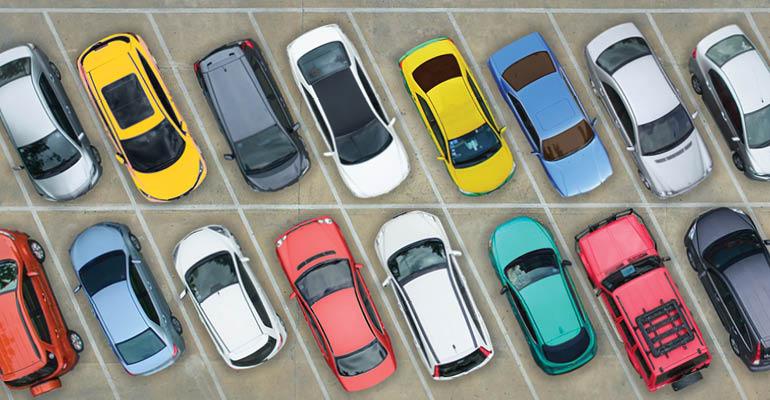Multifamily developers are fighting for the right to build fewer parking spaces at new apartment properties in downtown areas.
“There is a growing awareness among housing officials that the required parking ratios are out of whack with reality,” says Douglas Bibby, president of the National Multifamily Housing Council (NMHC), an industry organization.
People still depend on cars to get around in most of the United States. Two-car garages are likely to be standard for many single-family homes for years to come. However, people use fewer parking spaces if they live in places with shops and amenities within easy walking distance and many transit options for longer trips.
Developers struggle to find the right parking space ratio
Apartment developers need to make sure they don’t skimp on the number of parking spaces they provide at apartment communities. Parking is the community amenity that residents desire most, according to the 2015 NMHC/Kingsley Resident Preferences Survey.
But if developers build too much parking, the empty spaces may be difficult to repurpose for any other use. In dense urban areas, parking often needs to be stacked in concrete parking or underground structures that may be expensive or impossible to demolish. Also, many downtown areas, including those in Atlanta and Dallas, are changing to become more walkable areas with more transit choices. “The downtowns have changed dramatically,” says Bibby. “The more infrastructure is built up, the less they need that parking.”
Developers now regularly make the case to local officials that their properties may need less parking than the traditional two spaces per apartment.
“The conversation has shifted significantly over the years, and it has become much more accepted as a ‘best practice’ to have fewer parking spaces near transit-accessible locations,” says Carol Galante, I. Donald Terner distinguished professor in affordable housing and urban policy and the faculty director at Terner Center for Housing Innovation at the University of California, Berkeley.
In a handful of places, the battle is already won. In the high-rise neighborhoods of New York City, many new apartment developments are now underway with few or no parking spaces. In New York’s high-rise public housing projects, parking spaces are rarely used and the New York City Housing Authority is now assessing many of these sites for potential new development.
TransForm CA, a transit advocacy group based in San Francisco, has created its GreenTRIP Parking Database to show how many parking spaces were used at 80 apartment communities around the Bay Area from 2014 to 2014. Many parking spaces at these properties turned out not to needed. Partly in response to data like this, officials in Oakland, Calif. reduced their minimum parking requirements in the city’s downtown, which is served by several mass transit options.
Officials in San Francisco have now rewritten their parking requirements, as well. Rather than forcing developers to build a minimum amount of parking spaces, the code prevents developers from building more than a certain number of spaces per unit.
Officials can be responsive to how expensive it can be to add parking at developments that don’t have space for surface parking lots. Podium parking or underground parking garages can cost $65,000 per parking space to build in densely-populated markets like the San Francisco Bay Area, according to Galante. Even in less expensive markets, structured parking can cost $30,000 per space to build.
“This would make some market-rate developments unfeasible and affordable housing projects would require great local subsidy,” says Galante. Agencies like the Bay Area Rapid Transit also partner with developers to build housing on sites they owns near mass transit. The state of California provides gap funding and other subsidies to help support these developments.
Creating more transit options
Developers are creating other transit options for their residents by welcoming car-sharing companies like Uber. Some apartment developers are creating designated Uber drop-off and pickup areas close to the lobbies of their apartment communities where residents can wait for vehicles from car sharing services to arrive.
“We have less parking spots because people are Uber-ing more,” says Brian Koles, brand and experiences director with Property Markets Group (PMG), an investment and developments firm. PMG typically creates one parking space for each apartment it builds.
In many neighborhoods, apartment buildings may need fewer parking spaces in the future than they do today, as more shops and mass transit services come to the area.
“This is a moving target,” says Bibby.
Some developers are solving this challenge by partnering with local retail establishments and commercial properties to share parking spaces.





